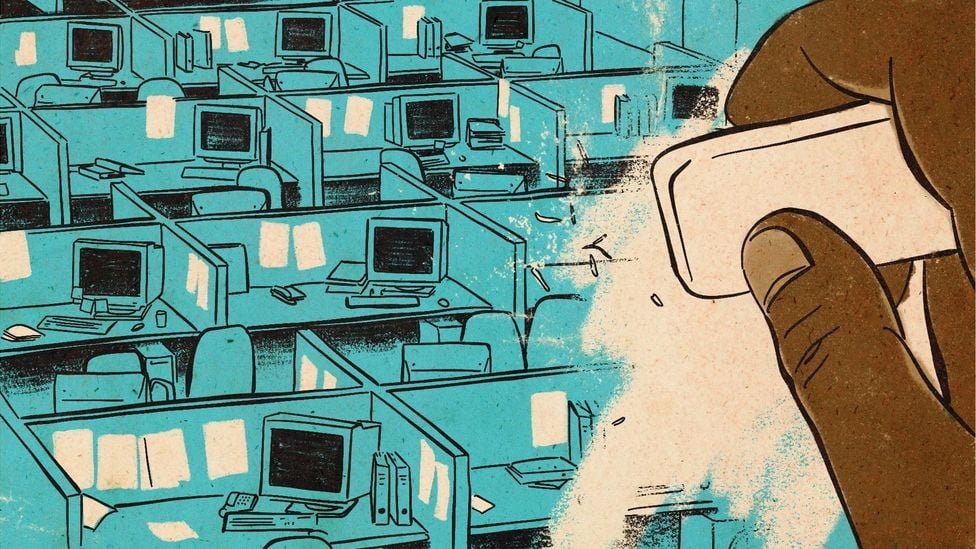In today’s ever-evolving real estate industry, commercial property management has been focused on making tenants feel more appreciated and satisfied. Through a combination of on-site perks, functional design, and digital tools, occupants want to see their workspace foster collaboration and flexibility, support a healthy work-life balance, and utilize modern technology. The demands for many of these features come from a growing millennial workforce, which will comprise 75% of the workforce by 2025, as well as rising rental rates, which have led tenants to expect more value from their landlords.
Commercial landlords are now more involved than ever before with employee engagement strategies and are dedicated to providing amenities and services that support wellness and community. Some of these features include concierge services that lessen administrative tasks or facilitate non-work errands, open spaces that are designed for better peer-to-peer communication, and on-site fitness centers and food services to facilitate healthy living. These strategies create cost savings for employers and support productive and happy employees, ultimately leading to better tenant advocacy and retainment.
Impacts of COVID-19
COVID-19 has created a dramatic shift in the way people work, leading many to reconsider their business environment. Stay-at-home orders and social distancing precautions have led companies to move operations off-site as employees work remotely from home. Now, tenants are no longer occupying their leased space and, as a result, any on-site perks have been eliminated.
Understandably, tenants do not enjoy paying for something that is not being used—especially when it is a more substantial item like a property lease. The resulting economic downturn of this global pandemic has also led many business leaders to reevaluate and scrutinize their spending. The pandemic has forced these companies to reconsider the value of their physical office space and in-person communication and what it really does for their employees’ productivity and performance. This has significant short- and long-term implications for the commercial real estate market.

Employers may be more inclined to underestimate the value of having a physical space during this time, especially if their particular business is operating smoothly through the transition to remote work. For certain tasks or roles, they might be witnessing their employees work longer hours or more efficiently while at home. As more people weigh the pros and cons against flexible off-site options, leases could fill up less quickly, be downsized, or not get renewed. At the very least, it is realistic to assume many employers will consider spending less money on smaller spaces, by making plans to reduce their dependence on larger common areas or requiring less people on-site each day.
Although it may seem logical to stop all engagement activities when tenants are no longer using office spaces, this is the time for properties to actively help employees stay engaged and help employers better manage their workforce during these challenging times. Keeping companies and their employees informed and providing resources to stay healthy and active during this period will be important in maintaining a sense of community—one that they will look forward to returning to, once normal business operations can begin again. As in all industries, product differentiation is key, and with the benefits of physical spaces being eliminated, virtual engagement solutions are the best way for properties to demonstrate that they are partners with their customers and unique relative to other properties.
The Future Of Work Environments
The rise and success of remote work during this time might be troubling to watch for property management. Commercial real estate certainly is here to stay, but there is no doubt that COVID-19 has changed tenants’ perspectives on what it can and should do for their business and employees.
Importantly, humans are innately social beings. A community not only provides people with their basic needs for safety, security, and resources but also enriches their lives with emotional enjoyment, creativity, the sharing of ideas, and personal fulfillment. Having a physical place to socialize and interact with others is difficult to fully replicate, even with modern-day communication technology. Oftentimes, ideas can develop more quickly and thoroughly if conveyed in person.
However, the flexibility and ease of modern technology and virtual communication means that these business spaces need to be more than just a place to get work done. Office spaces are competing with the comfort and convenience of workers’ homes. Building a community, and especially one that fosters a healthy work-life balance, is key. Tenant engagement was already on a trajectory towards this, but COVID-19 has made this more pertinent. People spend the vast majority of their week working, and there are few other places to develop that community feel than at work. Certainly, people’s eyes have been opened to the value of a life beyond their home and personal endeavors.

Nevertheless, it is reasonable to assume that the amount of time an average employee spends in a property will go down in the foreseeable future. COVID-19 accelerated trends that were already taking place, including a push toward remote work. While employers and employees will both benefit from physical interaction, the post-COVID world will likely have a permanent and significant shift to remote work, which means less employee time in physical spaces. This also means that the actions properties should be taking now to keep tenants engaged will remain valuable after the initial crisis passes. As such, properties should invest in virtual engagement solutions as a long-term strategy.
Post-COVID-19 Tenant Engagement Strategies
By leveraging technology and enhancing wellness and lifestyle support, commercial property management can continue to offer unique, attractive benefits and satisfy and retain more tenants for the long-term. The ultimate goal is to build a strong sense of community and continue regular engagement with tenants because that is what sustains tenant satisfaction and appreciation even when they are off-site. One of the best ways to build that community support is by being there for tenants when they need it the most—and COVID-19 certainly revealed all of the ways in which people need support, from disrupting personal finances and family obligations to elevating health concerns.
Properties should be focused on encouraging physical wellness and making it easy for tenants to find ways to be active. They can keep tenants healthy and fit with virtual resources and tools that go beyond on-site gyms or activities. This can be done through health content, telemedicine, online fitness classes, and even ideas for family-friendly activities. Similarly, landlords can provide resources on how to decrease stress and promote mental health. Mental health resources that specifically target managing stress and anxiety can also directly benefit tenants’ physical health by reducing the risk for chronic disease.

Educating tenants on immune-boosting tips and good cleaning practices can be a proactive way to eliminate future issues with widespread illness. Tenants may also expect more specific guidance from property management on how pandemic situations or other health concerns would be handled again, by outlining building safety precautions and preventive measures meant to minimize exposure and maintain cleanliness.
Supporting both mental and physical health has a direct benefit to employers because healthier employees are more productive. They take fewer sick days and are more present and focused when they are working. Also, they often qualify for lower health insurance premiums, saving much need capital during an economic downturn. To make implementation easier, properties can save time and money organizing and implementing these wellness tools and features for tenants by partnering with a vendor that specializes in virtual engagement solutions. Healthier and happier workers generate more money for their employers, resulting in more successful and satisfied tenants.
Conclusion
Although most businesses, including properties, were not prepared for a pandemic, they must live with its consequences. Sadly, for landlords, the short- and long-term impact may be quite significant, from deferring or lowering rent to dealing with higher vacancies. The best strategy for properties moving forward is to differentiate and re-tool their product for a post-COVID world. This means continuing to focus on tenant experience, which was already a growing trend, but doing so in a way that addresses the future of work. Properties need to create virtual solutions that foster community and support healthy living for employees that may not be on-site.












